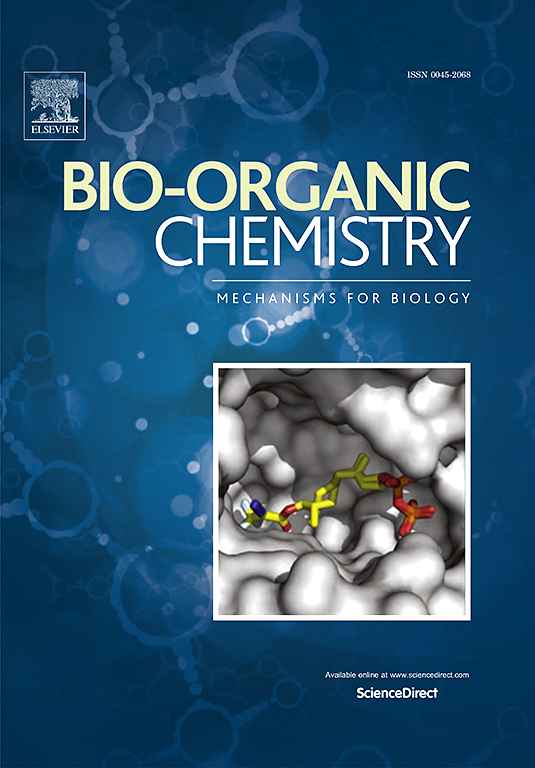Synthesis and biological evaluation of novel Trifluoromethylated Arylidene-hydrazinyl-thiazoles as neuroprotective agents
IF 4.5
2区 医学
Q1 BIOCHEMISTRY & MOLECULAR BIOLOGY
引用次数: 0
Abstract
Neurodegenerative diseases, a substantial global health challenge affecting millions, underscore the pressing need for novel and effective pharmacotherapeutic drugs to address these disorders. In this concern, a library of novel trifluoromethylated arylidene-hydrazinyl-thiazoles has been synthesized and assessed for their anti-neurodegenerative potential. Multicomponent regioselective chemical transformation has been carried out utilizing thiosemicarbazide, trifluoromethylated 1,3-diketones and heteroaryl aldehydes in the presence of N-bromosuccinimide (NBS) in refluxing ethanol. The regioisomeric structure of the synthesized products was unambiguously characterized by employing heteronuclear 2D NMR spectroscopic studies. All the synthesized derivatives were evaluated for their anti-neurodegenerative properties on rat brain hippocampus-derived Neural Stem Cells (NSCs), examining their impact on survival, proliferation and neuronal differentiation in vitro. Among the tested thiazole derivatives, compounds 4a, 4b, 4c, 4f, 4 g, 4b’ and 4i’ demonstrated a remarkable increase in the number of neuronal cells as compared to the control group within the NSC culture and also exhibited the ability to promote NSC differentiation towards the neuronal lineage. Additionally, the selected compounds showed protection against amyloid beta (Aβ)-induced neurotoxicity in NSCs culture. Incorporating the trifluoromethyl group into the thiazole scaffold is a pivotal factor in augmenting biopotency, resulting in a marked increase in the count of neuronal cells compared to their non-fluorinated thiazole counterparts.

求助全文
约1分钟内获得全文
求助全文
来源期刊

Bioorganic Chemistry
生物-生化与分子生物学
CiteScore
9.70
自引率
3.90%
发文量
679
审稿时长
31 days
期刊介绍:
Bioorganic Chemistry publishes research that addresses biological questions at the molecular level, using organic chemistry and principles of physical organic chemistry. The scope of the journal covers a range of topics at the organic chemistry-biology interface, including: enzyme catalysis, biotransformation and enzyme inhibition; nucleic acids chemistry; medicinal chemistry; natural product chemistry, natural product synthesis and natural product biosynthesis; antimicrobial agents; lipid and peptide chemistry; biophysical chemistry; biological probes; bio-orthogonal chemistry and biomimetic chemistry.
For manuscripts dealing with synthetic bioactive compounds, the Journal requires that the molecular target of the compounds described must be known, and must be demonstrated experimentally in the manuscript. For studies involving natural products, if the molecular target is unknown, some data beyond simple cell-based toxicity studies to provide insight into the mechanism of action is required. Studies supported by molecular docking are welcome, but must be supported by experimental data. The Journal does not consider manuscripts that are purely theoretical or computational in nature.
The Journal publishes regular articles, short communications and reviews. Reviews are normally invited by Editors or Editorial Board members. Authors of unsolicited reviews should first contact an Editor or Editorial Board member to determine whether the proposed article is within the scope of the Journal.
 求助内容:
求助内容: 应助结果提醒方式:
应助结果提醒方式:


